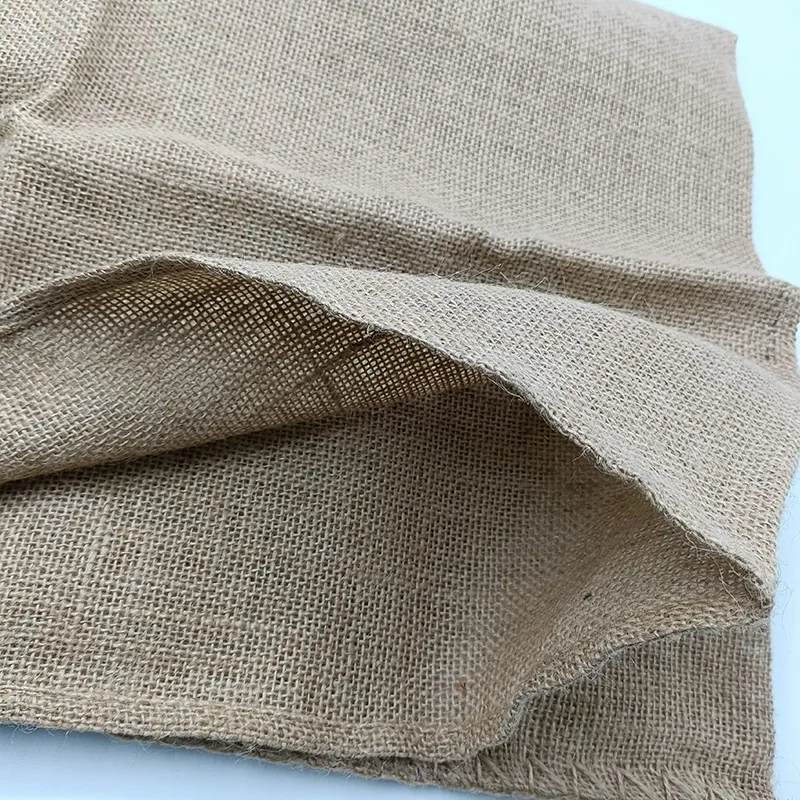Jute Bag: A Multifunctional Packaging Material That Helps Agriculture and Emergency Rescue
Huangma bags are widely used in various fields such as agricultural products, hardware, flood control and disaster relief due to their tough, durable, breathable, environmentally friendly and biodegradable characteristics. In agricultural product packaging, jute saks can effectively maintain the freshness of the products, prevent moisture accumulation, and reduce decay. In the hardware industry, jute saks are widely used for packaging and transportation of tools, mechanical parts, and other heavy objects due to their strong load-bearing capacity. Especially in flood control and disaster relief, jute bottle bags are an ideal material for sandbags, which can effectively block water flow, reduce the damage of floods to disaster areas, and assist emergency rescue work.

Jute Bags Are Used for Agriculture and Agricultural Product Packaging
In the field of agriculture, jute saks are an ideal choice for storing crops. Peanuts, beans and other agricultural products are often packaged and transported in jute saks after harvesting. The durability of jute fiber enables jute saks to withstand a certain weight of agricultural products and is not easily damaged. Moreover, jute saks have good breathability, which is crucial for agricultural products that need to be kept dry and prevent mold growth. Taking peanuts as an example, by packaging them in jute saks, air can freely circulate inside the bag, avoiding mold and deterioration caused by moisture and extending the storage time of peanuts.
The environmental characteristics of jute sakke also play an important role in the transportation of agricultural products. Compared to plastic woven bags, jute saks are biodegradable and do not cause pollution to the environment along transportation routes. Whether it is long-distance transportation or short distance distribution, jute packaging bags can ensure the safe arrival of agricultural products at their destination while meeting environmental requirements.
Jute Bottle Bags Are Used for Flood Control and Disaster Relief Supplies
Flood control and disaster relief are important tasks to ensure the safety of people's lives and property, and jute saks play an indispensable role in them. When a flood approaches, large jute saks filled with sand can be quickly stacked to form a flood control dam, blocking the invasion of the flood. Huangma bags have strong water absorption properties. After coming into contact with water, they can absorb a certain amount of water, increase their own weight, and make the dam more stable. Moreover, jute fibers can maintain good strength in humid environments and are not easily broken, ensuring the reliability of flood control embankments.
In areas prone to flooding, keeping a certain amount of jute saks on hand is one of the important flood prevention measures. These jute saks can be quickly put into use at critical moments, buying valuable time for flood control and rescue work, and protecting people's lives and property safety.
Jute Bags Are Used for Industrial and Hardware Packaging
In the industrial field, jute saks are also widely used. For some industrial products that require moisture and rust prevention, such as metal parts, mechanical equipment, etc., jute saks can be used as packaging materials. The natural fibers of jute saks can absorb moisture from the air, maintain a dry environment inside the packaging, and effectively prevent metal rusting. Meanwhile, the soft texture of jute saks can provide cushioning for the product, reducing collision damage during transportation and storage.
In the hardware industry, small-sized jute saks are commonly used for packaging small hardware accessories such as screws and nuts. The biodegradability of jute saks makes hardware companies more environmentally friendly in the packaging process, in line with the current concept of green production. Moreover, the cost of jute saks is relatively low, which can reduce packaging costs and improve economic efficiency for enterprises.
Deel
-
Lithium Battery Welding Machine | High-Precision, Fast, SafeNuusNov.17,2025
-
Aluminium Guide Roller | Anodized, Lightweight, Low-NoiseNuusNov.17,2025
-
Tofu Cat Litter Bulk – Eco, Low-Dust, Fast Clumping SupplyNuusNov.17,2025
-
Equipment for Lithium Cell Assembly | Automated & PreciseNuusNov.10,2025
-
Square File Tool – Precision Cut, Hardened Steel, VersatileNuusNov.10,2025
-
Lithium Ion Battery Assembly Machine | Automated, High-SpeedNuusNov.10,2025







